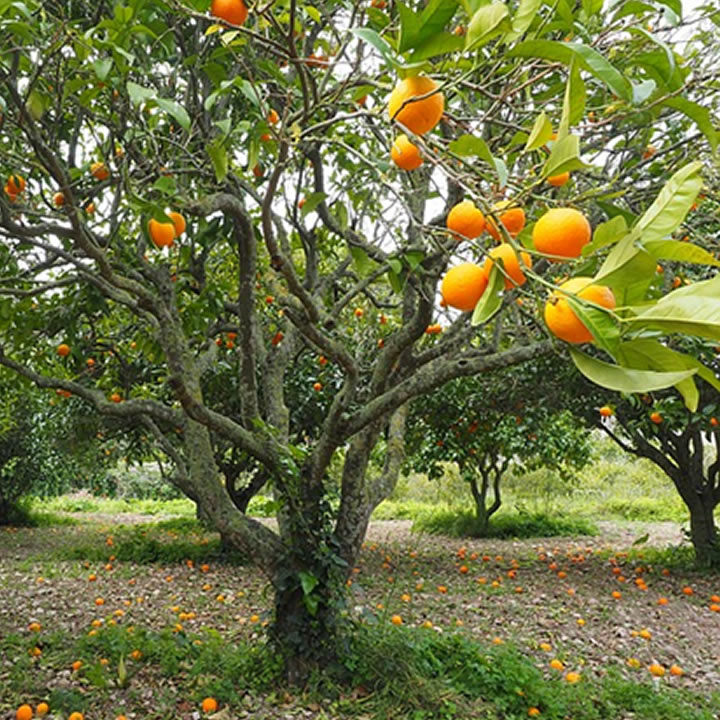Citrus fruits are a delicious, healthy treat during the winter months. This post will cover how to take care of citrus trees and how to make the most of your citrus fruit all year long.
What is a Citrus Tree?
A citrus tree comprises three parts the root system, trunk/branch system, and fruit or flower system. The citrus tree will have roots extending downward, a trunk and branches that open upward, and small flowers or fruits grow on the ends of the branches.
All orange trees produce an ‘anthocyanin inflorescence’ at some point during their lifetime.
The color of this flower depends on the variety of orange trees in question. The citrus tree will also always have thorns (as they are a sign of disease resistance), but other varieties may not produce thorns at all. Sometimes the flower is small, white, and odorless, such as in the case of the ‘sweet orange.’
Other varieties have larger flowers with strong fragrances.
Citrus trees are native to Asia. They can be grown outdoors or inside, depending on whether they are cold-hardy or not. The most well-known citrus fruits include lemons, oranges, and limes; however, many other citrus tree varieties may produce slightly different fruit or have better disease resistance than others.
Steps to Plant a Newly Bought Tree
(If possible) scrutinize the tree for damage, including bug-holes, before you buy it. You may want to talk with store employees about the quality of their trees. Usually, more expensive trees are less likely to have damage, as it is not economically viable for vendors to sell damaged stock.
Take care not to plant the tree too deeply in the pot you have chosen for it. Plant it a bit less than two-thirds the length of the tree’s root ball (i.e., if you dig a hole that is 24″ across and about 10″ deep, you should plant the tree so that the roots are about 16-17″ deep).
You can use a shovel or a garden kneeler with a digging tool.
Find an appropriate location for your tree. Citrus trees prefer full sun but will still grow with part shade. The optimal soil temperature for citrus trees is between 65-75 degrees Fahrenheit. Citrus trees tend to do better with somewhat acidic soil, making a pH of 5-6 acceptable.
Citrus trees are also sensitive to over-watering and under-watering, so it is important to remember this when you water your tree.
When you plant the tree, make sure that the loose soil around its roots is packed down and over the roots by hand. Pour some soil into the hole you dug for the tree and make sure not to miss any root areas. Next, pour the rest of the soil into the hole.
After putting back any equipment or tools that you have used in digging, watering, planting, and backfill, add a dose of water and fertilizer to your tree approximately 1-2 inches from the trunk–and firm it in place with your hands by pushing away from yourself.
Water and care for your tree each week until it is established (about 2-3 months). After that, your citrus tree should be able to look after itself.
Tending to Your Citrus Tree
It is essential to keep in mind the following guidelines when tending to your tree. Here are some of the most important tips we curated with the help of the gardening experts LemonCitrusTree.
Watering. Citrus trees need at least an inch of water per week, but you should avoid over-watering as much as possible. Check the soil with your finger regularly and water when the soil is dry near the roots (tapping your finger in several places may be helpful).
Fertilizing. Citrus trees should be fertilized every month with a low-analysis fertilizer from spring to fall and no fertilizer from winter to spring. You will have to use your judgment as to when you think it is best to fertilize your tree, but usually, it is safest not to fertilize during the winter.
Pruning. Citrus trees are tropical plants and should be pruned only lightly. Generally, you should prune your citrus tree with the trunk at least 2-3 inches from the ground. Each year, you should cut back after the spring growing season has finished by precisely 1/2 inch in all directions.
Pruning helps to increase the root system’s effectiveness and keeps the tree from being damaged by its weight.
Shading. Citrus trees should be shaded in hot, sunny spots. You can place a tree near a building or under a large evergreen plant or tree. The purpose of this is to keep the sun off of the leaves and trunk, which will help keep them cooler and happier.
Buds. Citrus trees are usually ready to produce fruit after about three years, but take care not to make your citrus tree bloom too early. Under-fertilization will result in smaller and inferior fruit.
Pests. Many pests can be a problem for citrus trees, including aphids, scale insects, and whiteflies. You can combat these pests with insecticidal soap (often available at garden centers) or by removing leaves that have been damaged or infested by them.
For more severe insect infestations, you can also experiment with the use of natural predators, such as the beneficial bugs that seem to be showing up in our gardens these days.
A citrus tree is a beautiful and bountiful addition to any garden and should be relatively easy to take care of, given its tropical origin. The only challenge may be the best way to accommodate a new plant is to find space for it in your garden.
The most important thing is to ensure that it gets all the natural sunlight, water, and nutrients it needs.
This might mean moving a plant from one garden to another or moving the citrus tree to a sunny spot or out of a shady area. After that, simply follow the guidelines to keep your citrus tree healthy and happy.

